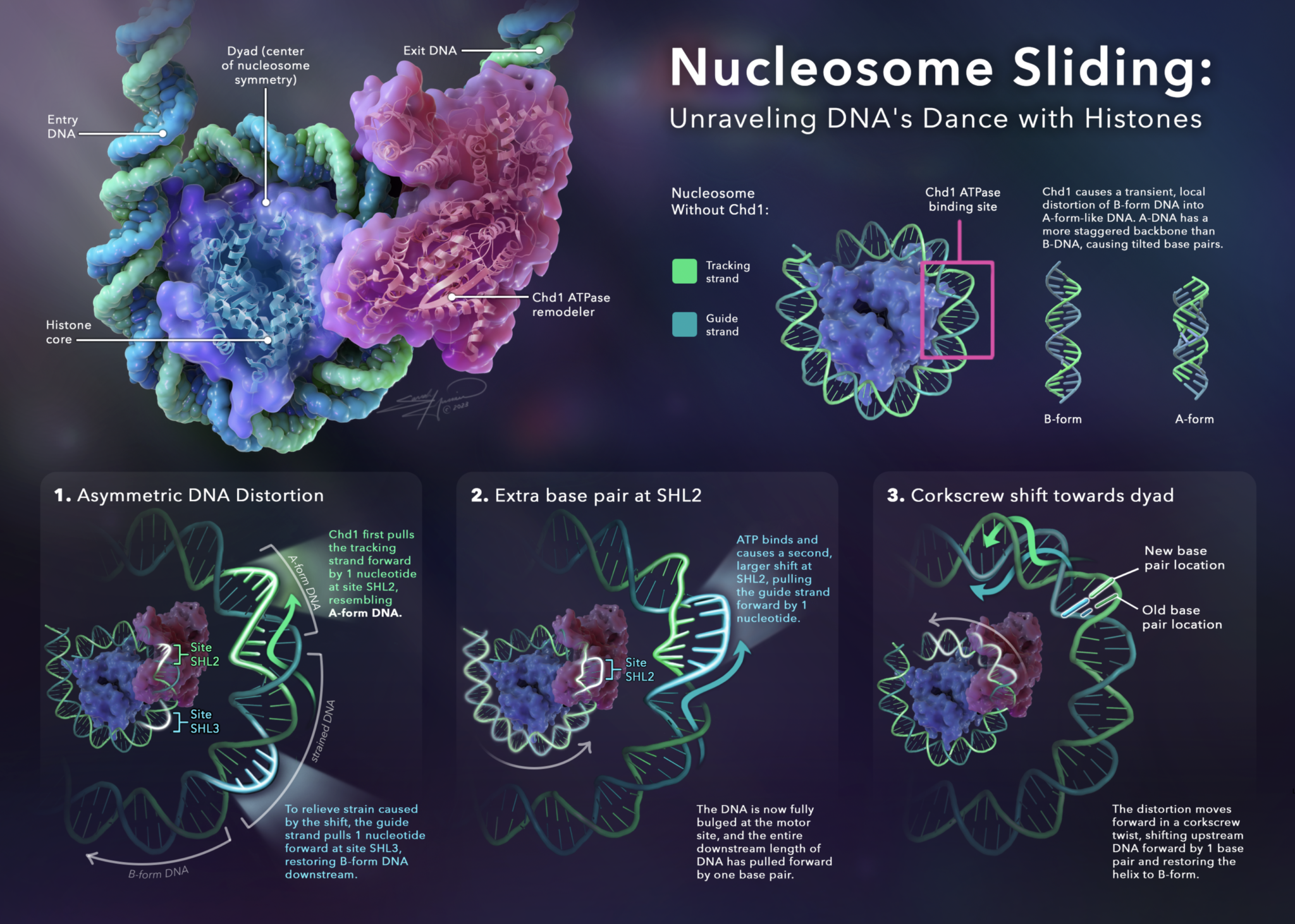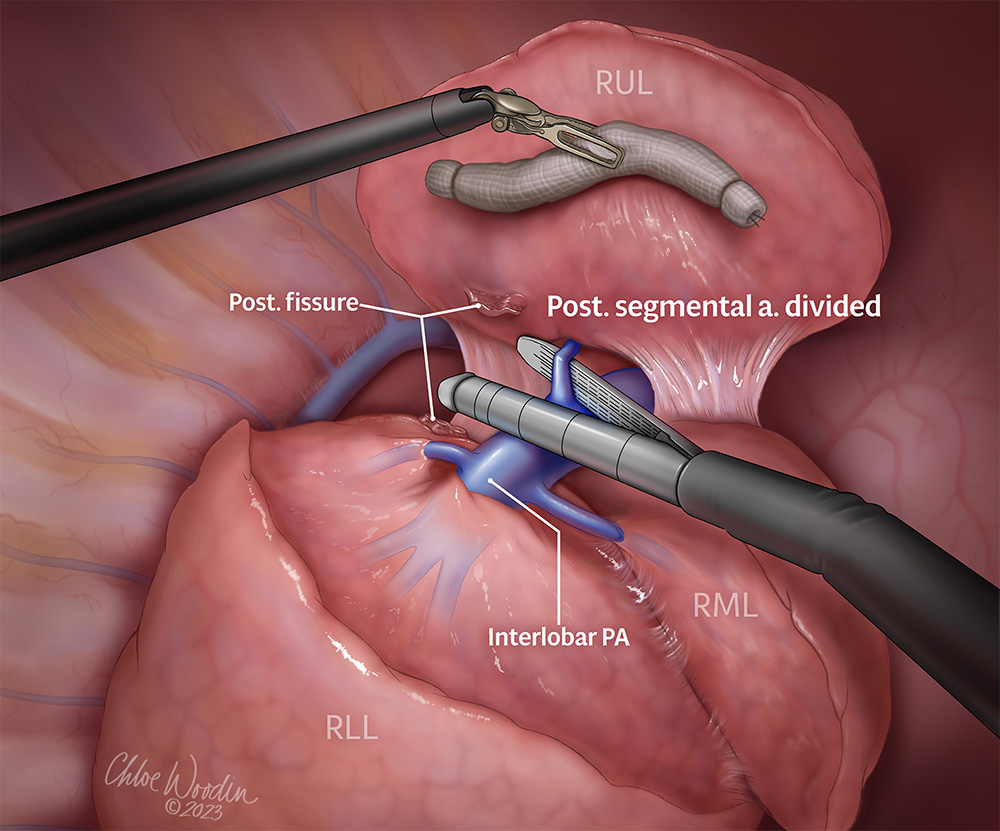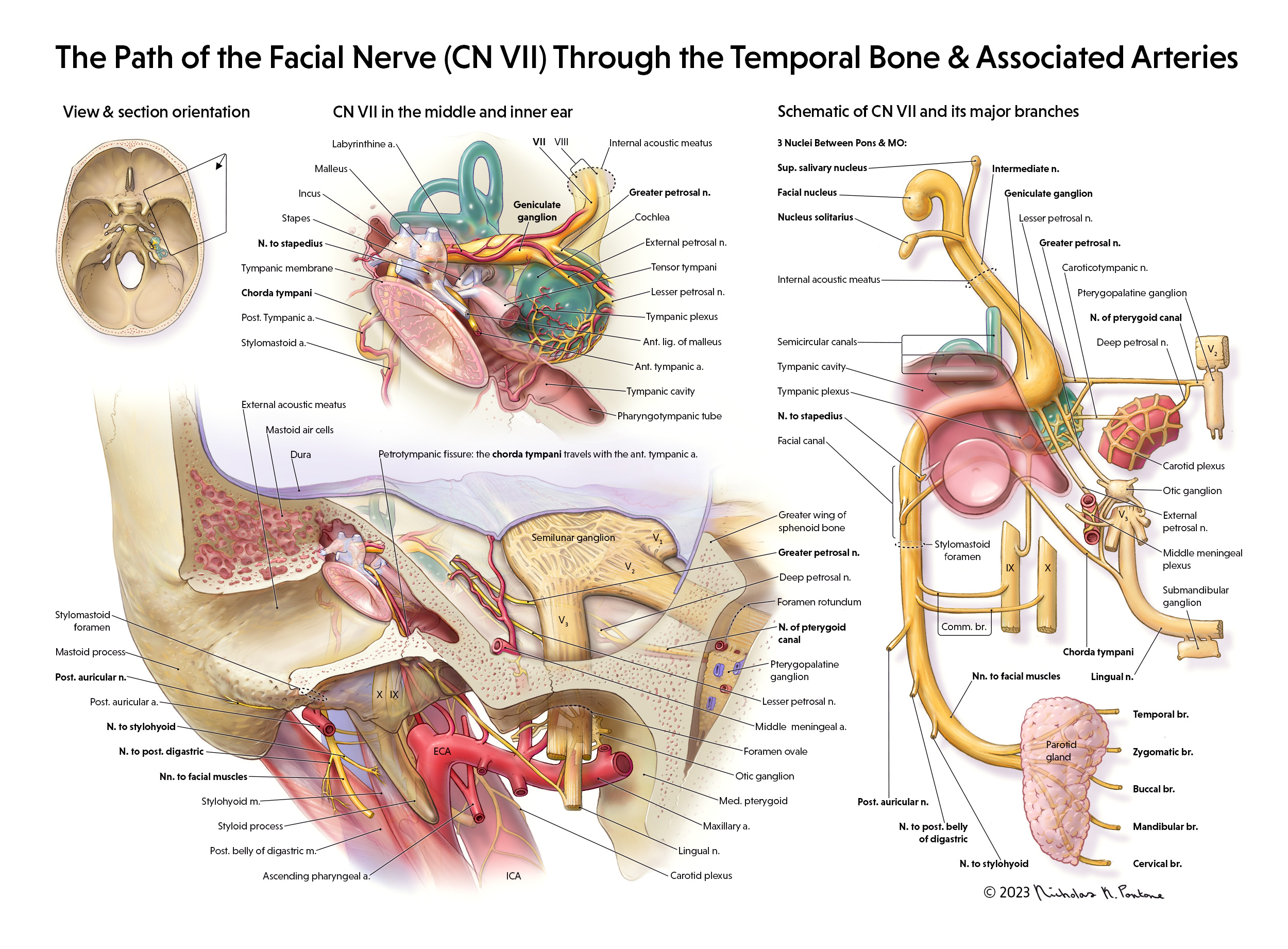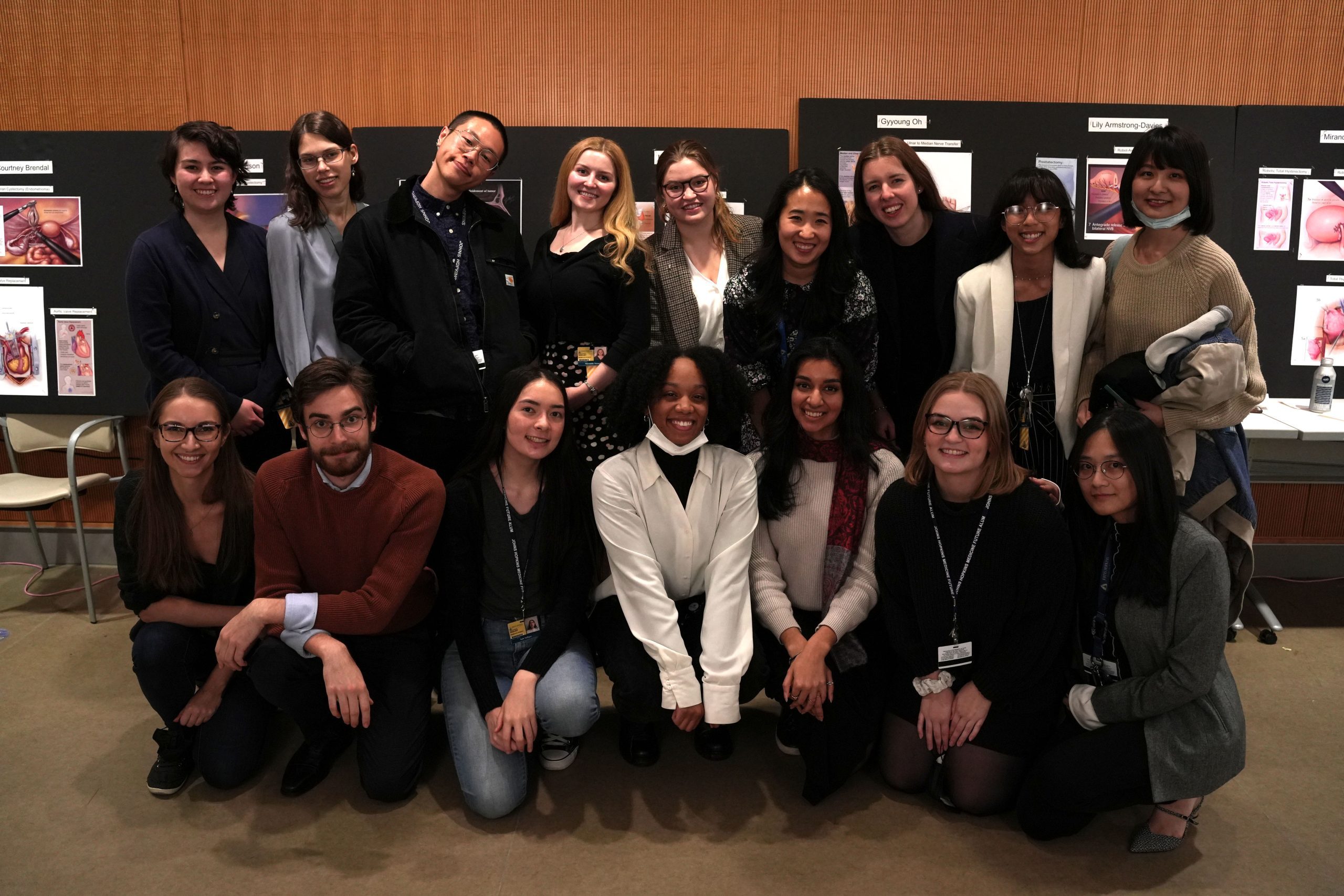Medical & Biological Illustration Graduate Program
The Medical and Biological Illustration (MBI) program offers a robust curriculum designed to prepare future leaders in the medical illustration profession. Accredited since 1970, the MBI program offers courses in visual communication of medicine and life-sciences as well as graduate level science courses in the School of Medicine.
Innovative Curriculum
Our curriculum is designed to equip students with the skills needed to excel in medical illustration.
Expert Faculty
Learn from leading professionals who are pioneers in the field of medical illustration.
State-of-the-Art Facilities
Access cutting-edge technology, a world-renowned institution and resources that are unmatched

Program Overview
The Medical and Biological Illustration (MBI) graduate program provides broad interdisciplinary education and training in medical illustration. Effective medical illustration can teach a new surgical procedure, explain a newly discovered molecular mechanism, describe how a medical device works, or depict a disease pathway. Through their work, medical illustrators bridge gaps in medical and healthcare communication.
People
The faculty, support staff, students and alumni are dedicated leaders in the field of visual communication for science and health care. Built on a strong foundation of scientific knowledge, artistic technique, and clear visual communication, students achieve the highest standards while embracing new medical, scientific, and communication technologies.
LEARN MORE

Admissions
The goal of the Admissions Committee is to find students with intellectual curiosity and a passion to communicate medicine and science through dynamic visuals. We seek candidates who demonstrate high academic performance in science, particularly the life sciences, excellent draftsmanship, and strong verbal and written communication skills.
Prerequisites
Baccalaureate Degree (B.S., B.A., B.F.A., or similar) demonstrating high academic achievement
Exemplary Science Preparation (comparable to pre-med) is required of all applicants, regardless of your major, with one semester-long class in each of the following courses:
- General Chemistry: at a level for science majors,
- Vertebrate Anatomy: *with mammalian (cat) dissection lab,
- Vertebrate Physiology: *including organ systems,
- Upper-Level Biological Science: **At least one of the following five specific advanced sciences: Cell Biology, Developmental Biology (Embryology), Histology, Molecular Biology, or Immunology.
*A two-semester Human Anatomy and Physiology (part 1 and part 2) course sequence which includes hands-on mammalian dissection lab may substitute for both Vertebrate Anatomy and Vertebrate Physiology. A one-semester course in Human Anatomy and Physiology may only substitute for one prerequisite, not both!
**Upper-Level Biological Science should be a Junior (300) or Senior (400) level course. A Freshman (100) level course will not be accepted.
Strong Art Portfolio demonstrating ability to realistically render directly observed subject matter in the following categories:
- General Drawing: Realistic drawings created from direct observation expressing form in space, light on form, and a variety of surface textures. Examples should demonstrate skilled draftsmanship, ability to render detail, and should include still life arrangements and animal and plant studies.
- Figure Drawing: Advanced studies of the human figure drawn directly from the model. Examples should include both long and short poses rendered in a variety of media.
- Color Media: Examples demonstrating accomplished use of transparent media such as watercolor or colored pencil and opaque media (acrylic, gouache, oil) should be included. Landscape and still life subject matter rendered in representational manner demonstrating the ability to match colors accurately and to create form and space with color
- Graphic Design: Layouts that integrate image and typography to conform to a pre-selected format and audience. Client-oriented visual communication projects.
- Digital Media: Knowledge and experience in vector and raster imaging applications. Courses in 2D animation, 3D animation, and web design are recommended.
- Sketchbook Pages: Examples of your artistic thought process and creativity, sketching from direct observation, and preliminary studies for final work. These are not intended to be examples of final artwork. Please submit pages as they exist in your sketchbook without additional editing or refinement.
Excellent Written and Verbal Communications Skills with at least one course in English Composition (GRE or TOEFL scores may substitute)
Application Process
Admissions process occurs in 2 Steps.
In Step 1, interested candidates submit a 20-image Portfolio and complete the Application Profile questions in SlideRoom (online submission platform). After review, the MBI Program Director shares feedback from the Admissions Committee to all portfolio candidates. Only candidates invited by the Committee continue to Step 2.
In Step 2, candidates invited by the Admissions Committee submit the official SOM Graduate Programs Application and Interview with the Director and with the Admissions Committee via Zoom. The SOM Application includes Transcripts, Letters of Recommendation, CV/Resume, and a Statement of Interest in the Program.
After all interviews are complete, a class of seven students is selected to matriculate into Hopkins on the first weekday in August.
LEARN MORE

Curriculum
2 Year Program
The Medical and Biological Illustration (MBI) program offers a robust curriculum designed to prepare future leaders in the medical illustration profession. Accredited since 1970, the MBI program offers courses in visual communication of medicine and life-sciences as well as graduate level science courses in the School of Medicine.
Year One
The first year curriculum includes courses in advanced sciences, illustration, animation, 3D modeling, graphic design, instructional design, and business practices. These core courses encourage research, close observation, accuracy, effective visual communication, exploration of various media, and learning in the sciences that will inform a future in medical illustration.
Year Two
The second year curriculum applies the skills and knowledge acquired in the first year coursework to advanced topics including surgical illustration, scientific writing, website development, interactive media, independent research and thesis, and presentations to scientific audiences. The second year culminates in the Portfolio course designed to help students transition to professional life.
LEARN MORE
Entering the Profession
There is a growing need for clear accurate visuals to communicate the latest advancements in science and medicine. Graduates of the Johns Hopkins Medical and Biological Illustration program have a strong history of full-time employment rates with some students receiving job offers prior to graduation. Of the graduates from 2020-2024, 97% were full-time employed within the first 6 months and only 5% were self-employed (that drops to 3% self-employed at 12 months after graduation).Looking ahead, medical illustrators will continue to fill the vital role of illuminating biomedical subject matter. Growth areas in medical illustration include 3D modeling and animation, virtual and augmented reality, and interactive design.
The Oldest School, but certainly not “old school”
Request More Information
To receive more information about the Johns Hopkins Master of Arts in Medical & Biological Illustration (MBI) Graduate Program, please fill out our Information Request Form below. You may also call 410-955-3213 or send an e-mail to [email protected] for more information.
Ready to Apply?
Let’s get started! Admission to our program is a two-step process. Please feel free to get in touch and let us know how we can help you on your journey!

